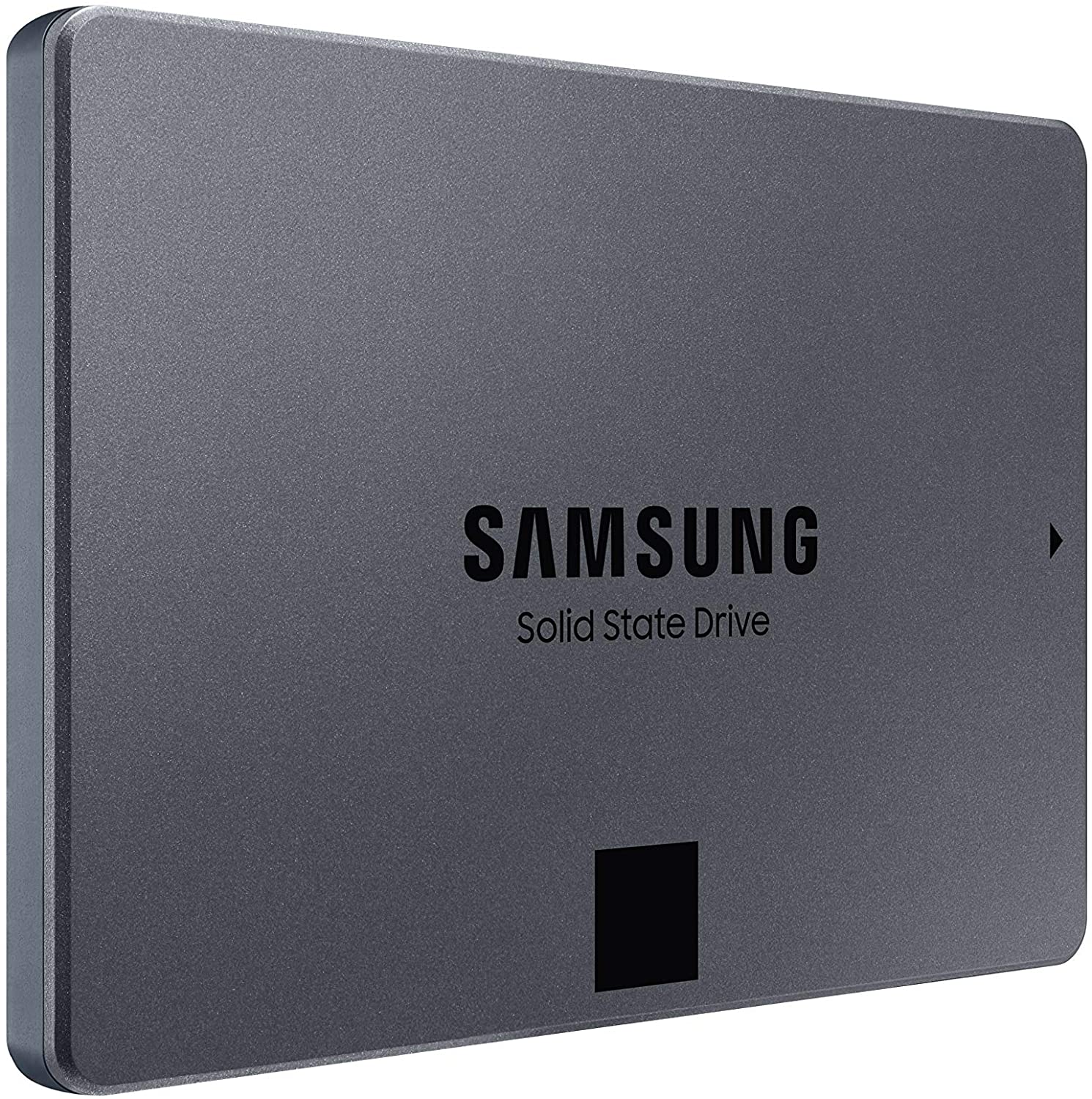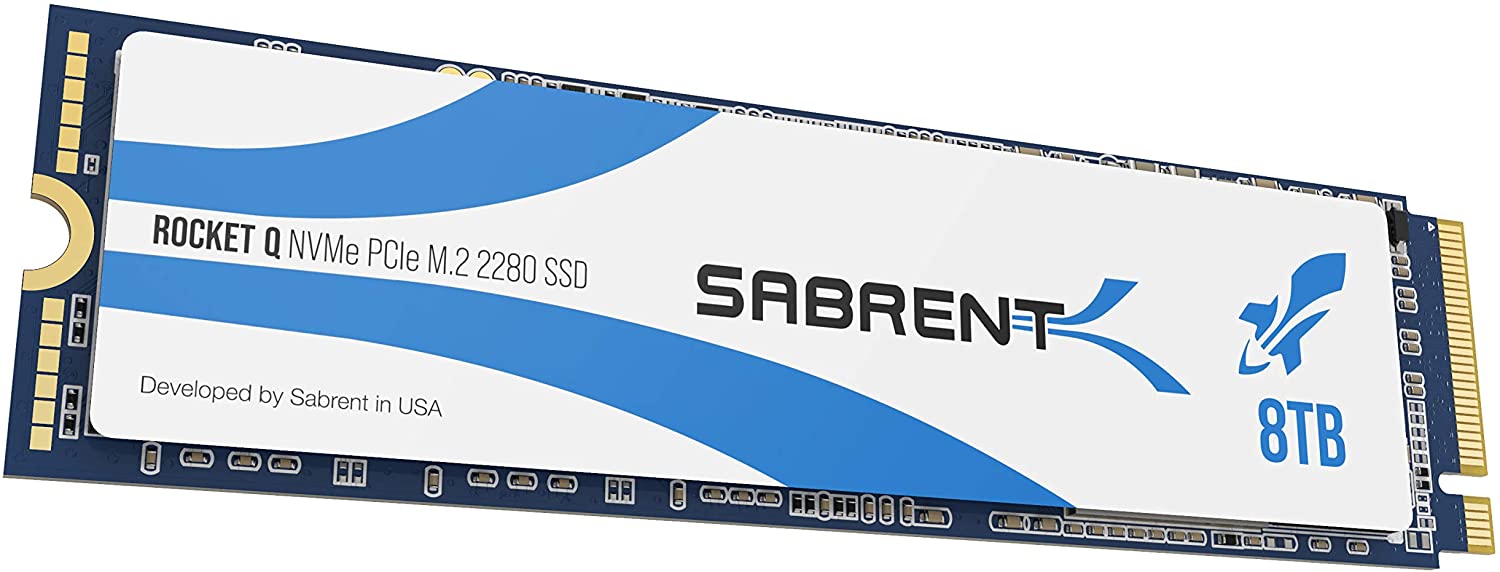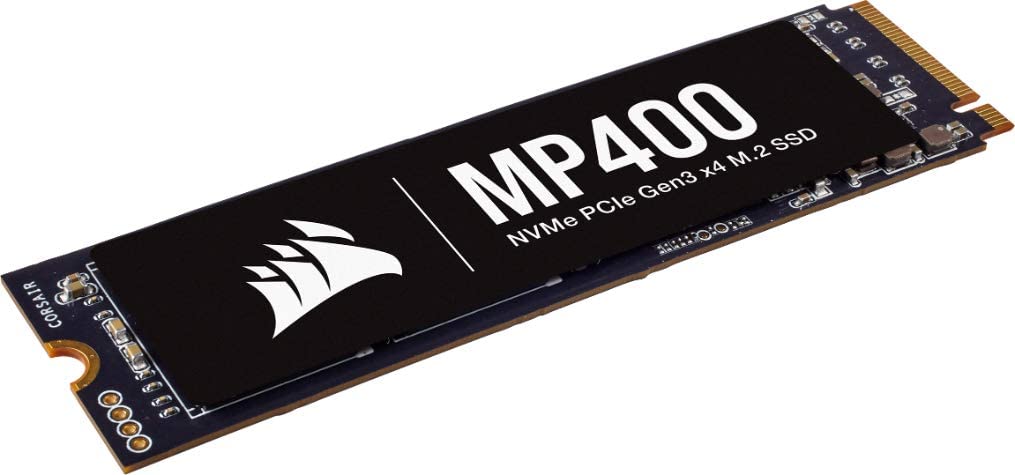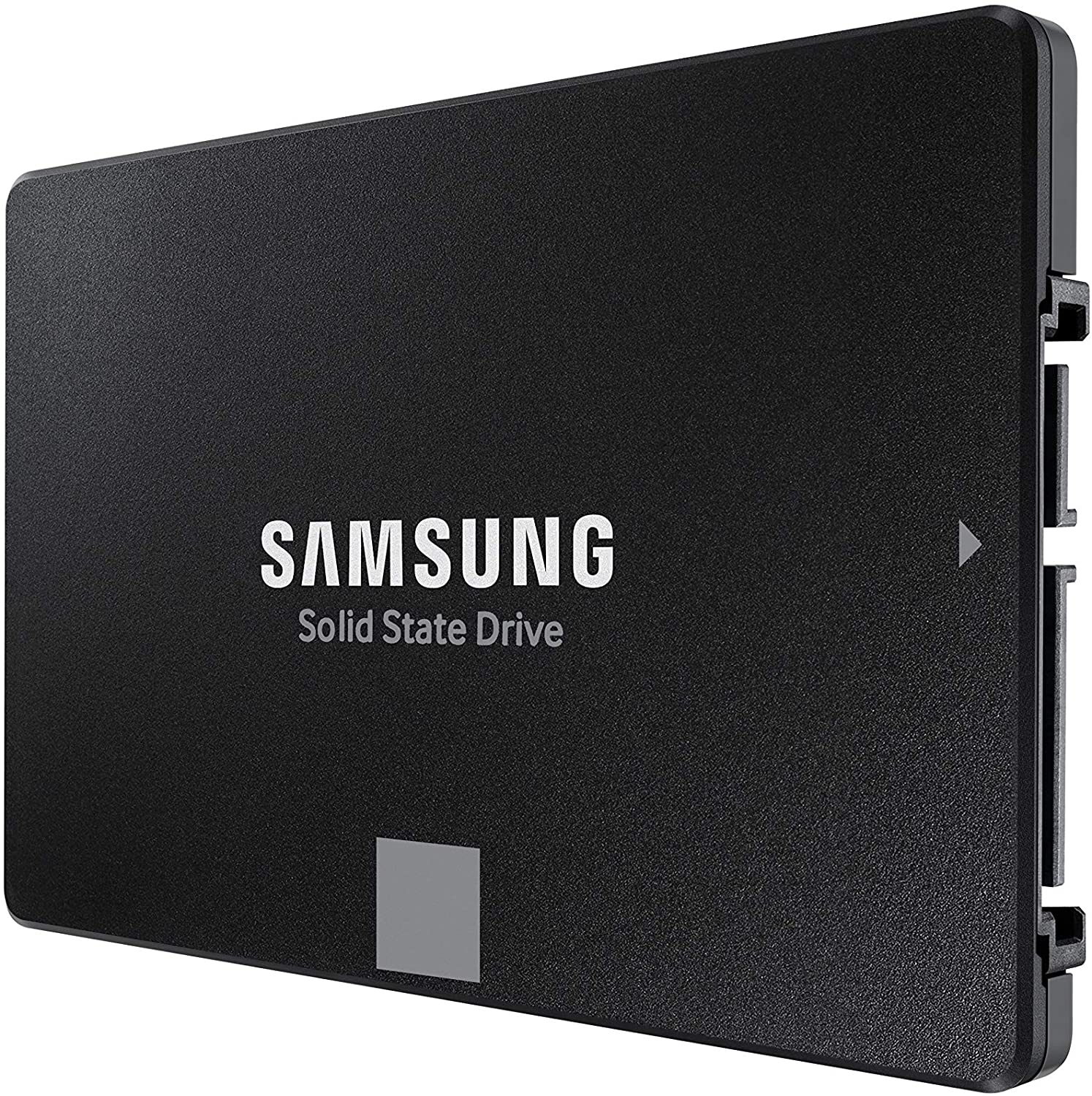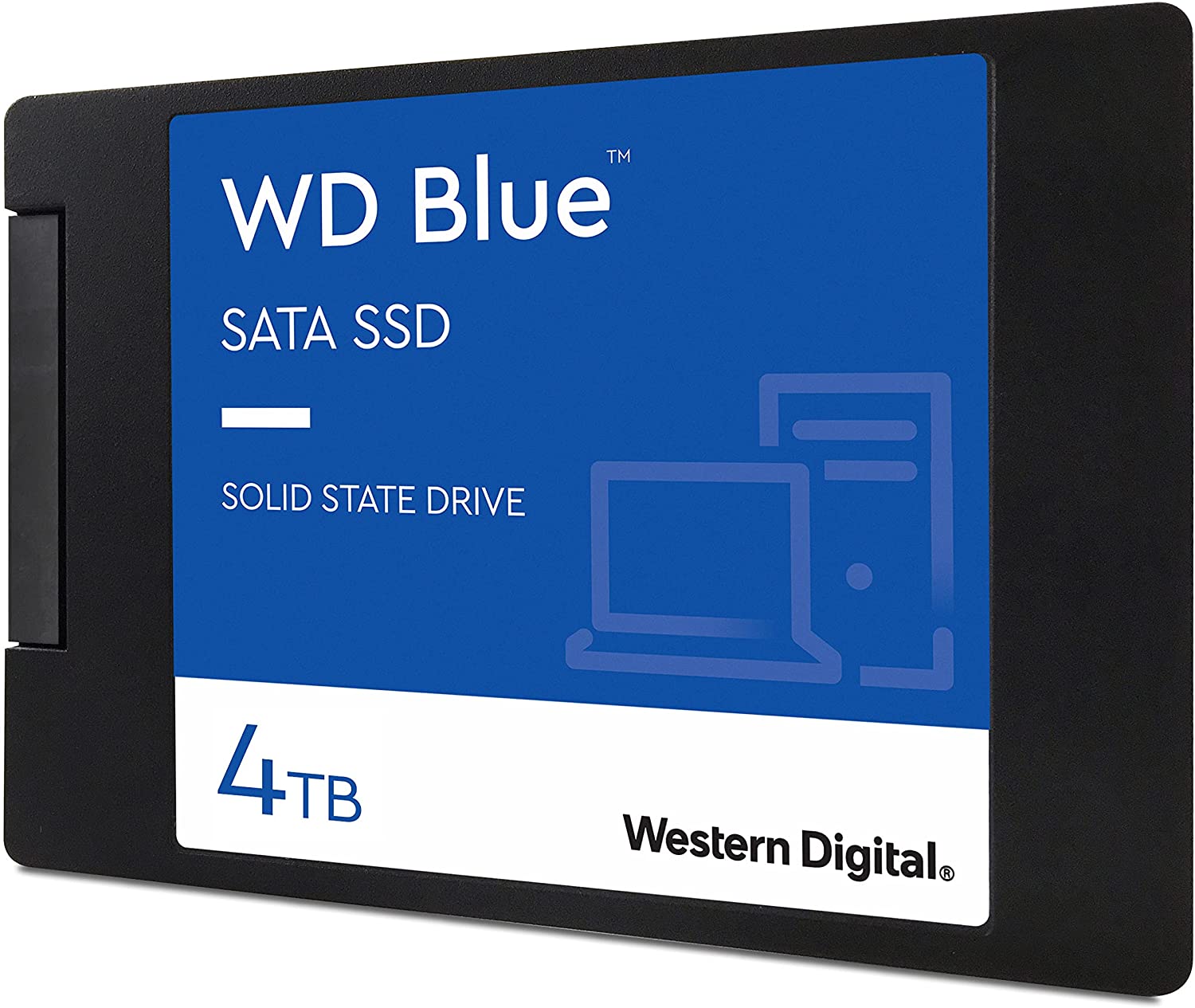A huge part of this move can be attributed to the falling price of NAND flash and the subsequent decrease in the price of Solid State Drives in the storage market. This has led most users who are building a new PC in 2022 to just pick a fast SATA or NVMe SSD for a reasonable price instead of opting for a hard drive. There is still an area where hard drives are almost solely prevalent and that is mass storage in gaming PCs. However, SSDs are slowly but surely taking over that space as well.
The Best High Capacity SSDs – Our Recommendations
It is considered the ideal practice to pair a smaller, faster SSD like a PCIe Gen 4 SSD with a large, high-capacity HDD in order to get the best of both worlds. However, the falling prices of NAND flash and the improvements in SSD technologies have led to an overall price drop in the cost of high capacity SSDs as well. They are still more expensive than hard drives gig-for-gig, but they offer much faster operation while being smaller and quieter. So with that in mind, here are the 5 best high capacity SSDs to buy in 2022. Samsung is renowned in the storage industry for its incredible reliability and the fantastic performance of its SSDs. The Samsung 870 QVO is Samsung’s SATA SSD option that is aimed at the high-capacity market. The 870 QVO is a 2.5-inch SATA SSD that is available in 1TB, 2TB, 4TB, and even 8TB capacity options. It uses 3D QLC NAND Flash and it can reach sequential read speeds of 560 MB/s while delivering write speeds of up to 530 MB/s. It is quite simply one of the best SATA SSDs you can buy right now.
The 870 QVO is ideal for those who are looking to pair a reliable high-capacity SSD with a smaller SSD to complete an all-solid-state system. Samsung has released the 870 QVO in most capacities ranging from 1TB all the way up to 8TB, and that places the 870 QVO head-to-head in terms of storage space with most hard drives. The 2TB, 4TB, and 8TB variants make the most sense for a mass storage SSD in a fairly modern gaming PC. The 870 QVO uses a Samsung MKX controller and has a Tri-core, 8-ch, 8-CE/ch configuration. There is a DRAM cache present on the SSD as well, which is really important for the long-term endurance and sustained performance of the drive. The only drawback of the drive is the inclusion of the 3D QLC NAND Flash instead of the TLC NAND, which delivers better sustained performance. However, this trade-off is completely justified since QLC NAND allows the drive manufacturer to maximize the capacity of the drive without increasing the price too much. The speeds of the SSD are still fantastic, as the 870 QVO can deliver sequential read speeds of up to 560 MB/s. The maximum sequential write speeds are also rated up to 530 MB/s, and these numbers are quite close to the theoretical maximum that the SATA 6Gbps protocol can handle. The QLC NAND does not hurt its performance too much in shorter, lighter workloads, however, you might experience some comparative slowdowns when writing large files to the SSD over a long period of time. This is an acceptable tradeoff, however, since this drive should not be used to install an operating system anyway. Overall, the Samsung 870 QVO is the best overall high capacity SSD due to its wide range of capacity options, reliable internal components, and relatively modest pricing. Having QLC NAND is its only obvious weak point, but that is true for many other high-capacity SSDs on the market as well. Sabrent is a smaller manufacturer but it has quickly become a fan favorite among PC building enthusiasts due to its fantastic products and competitive prices. The Sabrent Rocket Q 8TB is another solid offering from Sabrent that is targeted at users looking for a high-capacity SSD that is also blazing fast. The Sabrent Rocket Q 8TB is an NVMe drive which means that surely satisfies the latter criteria quite well, and it can be configured in capacities of up to 8TB on a single M.2 drive. It is quite simply the best performing high capacity SSD on our list.
The Rocket Q is offered in capacities of 500 GB, 1TB, 2TB, 4TB, and even 8TB. This means that there are a lot of options to choose from that would suit different potential buyers with different needs. The Rocket Q 8TB has sequential read speeds of up to 3300 MB/s with sequential write speeds right around 3000 MB/s. The drive also has a DRAM cache of course and is offered in the M.2 form factor which eliminates cable clutter and is quite easy to install. The only drawback of the Rocket Q 8TB, apart from its price, is its 3D QLC NAND configuration just like the Samsung 870 QVO. It is quite difficult for manufacturers to assemble an 8TB high-capacity SSD by using the TLC NAND flash while keeping it at a reasonable price. This is the reason the very high capacity SSDs such as this one use the QLC NAND type in order to get the maximum capacity. The performance of the Sabrent Rocket Q 8TB is still exceptional due to its NVMe interface, however, it would be unwise to buy this drive as your primary or only storage. QLC drives should not be used to install operating systems and should be reserved for mass storage. The Rocket Q 8TB uses a Phison E12S controller in a Quad-core, 8-ch, 4-CE/ch configuration with a DRAM cache onboard. The controller is quite a formidable one, and the presence of a DRAM cache means that the drive would not experience slowdowns or endurance issues over extended use. The price of Rocket 8TB is quite hefty if we compare it to SATA SSDs, but it is actually quite reasonable when compared to other high-capacity NVMe SSDs. All in all, the Sabrent Rocket Q 8TB combines the worlds of speed and high capacity in a single SSD and is ideal for people who are looking for a high-speed secondary storage SSD. The price-to-performance ratio is excellent if when compared to other high-capacity NVMe options. Unlike Sabrent, Corsair needs no introduction to most PC builders. They have been around since forever and have curated a reputation for being ultra-reliable and for having excellent customer support. Their Corsair MP400 8TB is another high-speed, high-capacity NVMe option just like the Sabrent Rocket Q, however, it is a little bit more expensive than the latter. The MP400 also offers the massive 8TB capacity option, hence the name.
Related Read: How To Check NVMe SSD Compatibility Corsair offers the MP400 in 1TB, 2TB, 4TB, and 8TB capacities, which are more than enough for most gaming PC builders. The 500GB capacity is not offered by Corsair, but that is a capacity that makes more sense for an operating system drive rather than a mass storage drive. The sequential read speeds of the MP400 are up to 3400 MB/s with sequential write speeds being right around 3000 MB/s. The drive is offered in the M.2 form factor which cleans up the cable clutter and is easier to install. You might want to take a look at our picks for the best NVMe heatsinks for this one as well. Just like the Sabrent Rocket Q, however, the Corsair MP400 also contains 3D QLC NAND Flash in order to maximize the capacity of the drive while keeping it relatively affordable. The drive does not experience any massive performance issues despite having the QLC NAND, and that is due to the excellent NVMe speeds that the drive is capable of producing. The 3400 MB/s read and 3000 MB/s write speeds are quite close to the limits of what is possible with the NVMe protocol. The Corsair MP400 uses the same fantastic Phison E12S controller as the Sabrent Rocket Q. The configuration of the drive is also Quad-core, 8-ch, 4-CE/ch which is the same as the Sabrent as well. These drives are quite similar in terms of internal components. The MP400 also contains a DRAM cache that helps with the long-term endurance and sustained performance of the drive. The Corsair MP400 is one of the fastest NVMe options on the market that is available in a high-capacity configuration. Despite using QLC NAND, the drive delivers an exceptional performance as a mass storage drive due to its high speeds and reliable components. Its price is a bit high, however, as it is even more expensive than the Sabrent Rocket Q. The potential buyer should weigh the performance of the drive against the price premium before making a purchase decision. Still, it is our choice for the most reliable high capacity SSD on our list. The 870 EVO is a performance-focused SATA SSD that uses the 3D TLC NAND Flash instead of the QLC NAND of the aforementioned drives. This means that the 870 EVO has much higher sustained performance and endurance than the drives mentioned above, and can even outperform the NVMe drives in certain specific scenarios. However, the TLC NAND is more expensive to produce, and that means that Samsung is unable to offer the massive 8TB version of the 870 EVO using this NAND type.
Samsung has released the 870 EVO in most capacities ranging all the way from 250GB all the way up to 4TB. This is a good decision and allows potential buyers to choose the SSD capacity of their choice. Most people on a budget will be fine with 250GB or 500GB options and those SSDs will also make great OS drives without spending too much money. Alternatively, for people looking for the ultimate storage drives, the 2TB and 4TB options are also available which will be plenty for a large steam library and all the OS files as well. The 8TB option is missing as mentioned before. Still, the 870 EVO is the best value high capacity SSD on our list. The 870 EVO uses a Samsung MJX controller and has a Tri-core, 8-ch, 8-CE/ch configuration. The SSD does contain a DRAM cache as well, and it can hit speeds of up to 550 MB/s read and 520 MB/s writes in sequential scenarios, which is the maximum that is possible with the SATA 6 Gbps link. You can learn more about the importance of DRAM cache and other related factors in our SSD buying guide as well. Overall, the 870 EVO is a performance-focused SATA SSD that offers great all-around performance due to its TLC NAND configuration, although potential buyers who are looking at more than 4TB of SSD space should look at the 870 QVO instead. WD’s Blue series is the more performance-focused lineup of WD’s SATA SSDs. The WD Blue SSDs also use a 3D TLC NAND configuration just like the 870 EVO from Samsung. This means that the WD Blue drives also cannot offer an 8TB variant at a reasonable price, so WD has capped the capacity options at 4TB. Apart from this point, however, WD Blue is probably the best budget high capacity SSD on the market right now.
The WD Blue comes in all capacities from 250GB all the way up to 4TB so that most people can choose whatever capacity they want for their use case. The 250GB and 500GB drives are great value for an affordable OS drive for an entry-level gaming PC or even a laptop. WD also offers the 2TB and 4TB varieties which can be useful for consumers looking for a large amount of solid-state storage on the cheap. The 8TB variant is missing from this drive as well due to its TLC configuration. WD has also gone ahead and made the WD Blue drives in the M.2 SATA form factor in addition to the 2.5 inch SATA form factor. This would make it easier to install the drive directly into the motherboard to remove cable clutter and improve the overall aesthetics of the build. WD is using the Marvell 88SS1074 controller in the WD Blue drives with a Dual-Core, 4-ch, 8-CH/ch configuration. The WD Blue drives also contain a DRAM cache which helps in the overall durability of the drive and improves sustained performance. WD is using Sandisk’s 3D TLC NAND with 64 layers that allow more data to be written to the NAND cells. This configuration allows the WD Blue to reach read speeds of 560 MB/s sequential reads, and 530 MB/s sequential writes and that essentially saturates the SATA 6Gbps link. The WD Blue is comparatively cheaper than the 870 EVO and the NVMe drives and should therefore be a good alternative to those drives. The only problem is that many people do not trust WD’s reliability due to their history with hard drives and while there have not been any major cases of WD Blue drives failing, it is a point that you might want to consider while making a purchase decision especially if their lower TBW rating is anything to go by. META DESCRIPTION: In this roundup, we rank the best high capacity SSDs on the basis of performance, capacity options, reliability, and value.
5 Most Reliable High Capacity SSDs To Buy In 20225 Best DRAM-less SATA SSDs to Buy In 20225 Best Heatsinks For NVMe SSDs In 2022Which Brands are the Best for PCIe NVMe M.2 SSDs


